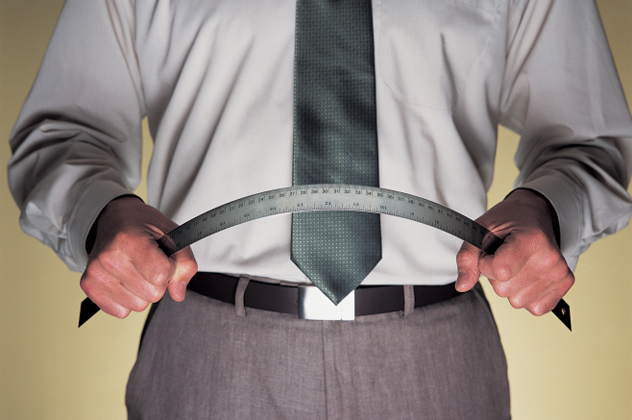 Music
Music  Music
Music  History
History 10 Less Than Jolly Events That Occurred on December 25
 Weird Stuff
Weird Stuff 10 Funny Ways That Researchers Overthink Christmas
 Politics
Politics 10 Political Scandals That Sent Crowds Into the Streets
 Weird Stuff
Weird Stuff Ten Bizarre Facts About The Doge Meme
 Our World
Our World 10 Ways Your Christmas Tree Is More Lit Than You Think
 Movies and TV
Movies and TV The 10 Coolest Stars to Set Sail on The Love Boat
 History
History 10 Things You Didn’t Know About the American National Anthem
 Technology
Technology Top 10 Everyday Tech Buzzwords That Hide a Darker Past
 Humans
Humans 10 Everyday Human Behaviors That Are Actually Survival Instincts
 Music
Music 10 Surprising Origin Stories of Your Favorite Holiday Songs
 History
History 10 Less Than Jolly Events That Occurred on December 25
 Weird Stuff
Weird Stuff 10 Funny Ways That Researchers Overthink Christmas
Who's Behind Listverse?

Jamie Frater
Head Editor
Jamie founded Listverse due to an insatiable desire to share fascinating, obscure, and bizarre facts. He has been a guest speaker on numerous national radio and television stations and is a five time published author.
More About Us Politics
Politics 10 Political Scandals That Sent Crowds Into the Streets
 Weird Stuff
Weird Stuff Ten Bizarre Facts About The Doge Meme
 Our World
Our World 10 Ways Your Christmas Tree Is More Lit Than You Think
 Movies and TV
Movies and TV The 10 Coolest Stars to Set Sail on The Love Boat
 History
History 10 Things You Didn’t Know About the American National Anthem
 Technology
Technology Top 10 Everyday Tech Buzzwords That Hide a Darker Past
 Humans
Humans 10 Everyday Human Behaviors That Are Actually Survival Instincts
10 Things You Didn’t Think Still Existed
Like your first pet, your favorite bike, and your first kiss, there are some things you thought were gone forever. But some relics from the past have survived the forward marches of time and technology. The 10 items on this list will probably surprise you, since most of us haven’t heard of them in decades. The good news is that, unlike your first kiss, they can still be experienced again. Are you ready to feel younger?
10 Corporal Punishment In Schools

If you think we left corporal punishment behind with segregation and McCarthyism, you couldn’t be more wrong. Hundreds of thousands of American children still get flogged, legally, in public schools every year. In 1977, the Supreme Court declared the practice lawful “where it has not been explicitly outlawed by local authorities.”
And in 19 states—mostly in the South and Midwest—your duties as a teacher or administrator may still include smacking students’ behinds with a wooden or fiberglass paddle. In 2012, 39,000 floggings took place in Mississippi alone—often for minor transgressions such as tardiness, talking in class, and untucked shirts.
9 The World’s Fair

A World’s Fair (aka Universal Expo) has been thrown somewhere on Earth every 1–4 years since 1851. The next is in Milan, Italy, in 2015. But since the U.S. hasn’t hosted one since 1984, many Americans assume it isn’t held anymore.
The World’s Fair was once a huge deal, with attendance numbers exceeding a third of the entire US population. For the 1890 event, Paris built the Eiffel Tower. America answered back in 1893 by debuting electric lighting and the Ferris wheel. Ice cream cones, dishwashers, the Ford Mustang, and the Space Needle all came to us in this way.
However, attendance was so poor at the 1984 World’s Fair in New Orleans that it became the only exposition to declare bankruptcy while still open. Since no one wanted to stage a follow-up, the US withdrew from the Paris-based World’s Fair organizing body in 2001.
8 The Star Wars Set

The Force is still with us—though apparently not for much longer. About 20 structures used to represent Luke Skywalker’s home planet of Tatooine still stand in the Sahara desert in Tunisia, North Africa. Most were built for 1999’s The Phantom Menace, but some date back to the original 1976 shoot.
Although remotely located in harsh terrain, the set has been such a major source of fanboy tourism that Tunisia asked George Lucas to leave it intact during his last visit. Alas, Tatooine is about to enter a losing battle with the ultimate phantom menace: a large sand dune, moving at a rate of five centimeters (2 in) per day, that is almost sure to swallow it whole in a few more years.
7 The Very First Website

A little more than 20 years ago, CERN (the European Organization for Nuclear Research) published a mission statement for a new electronic platform invented by British physicist Tim Berners-Lee and hosted on a NeXT computer at Steve Jobs’ startup company.
The statement described the “WorldWideWeb” as “a wide-area hypermedia information retrieval initiative aiming to give universal access to a large universe of documents.” (Can you repeat that from memory?) It also begged nerds to “put up some data.” Oh, and Al Gore was not in the room.
The first website—more accurately described as a 1992 copy of the first website—has continued to exist on CERN’s servers. However, until a recent reconstruction for Internet history buffs, its original URL redirected to the root CERN site. It has since been restored to its original glory.
6 Tab Cola

Tab was introduced in 1963 to imitate the success of Royal Crown’s Diet Rite cola (its name referred to the tabs that drinkers could now keep on their weight). The pink can with the chemical taste was everywhere in the ’60s and ’70s, before its sweetener, saccharin, came under fire as a possible carcinogen.
When Coca-Cola launched Diet Coke in 1982, adding the newly introduced aspartame a year later, most people naturally assumed that it replaced Tab. Instead, it simply drove it underground. Tab is now a niche Coke product still available on Amazon and in a handful of US markets.
5 The Original MGM Grand

The hotel where a 1980 fire killed 85 people was repaired and reopened eight months later, and since 1986 it has operated under its current name: Bally’s. Most tourists—and even some travel guides—assume that the third-worst hotel fire in modern US history occurred at the site of the current MGM Grand, which had to be rebuilt from the ground up. And it’s a good bet that Bally’s current owner, Caesars Corporation, wants you thinking that, too. But it’s just not true.
The hotel—the most modern on the Strip at the time—suffered fire damage that was only internal and mostly confined to the lobby. And so it was merely remodeled, outfitted with sprinklers in every room, and, eventually, sold. Which means that, for the past 31 years, people have slept in the same upper-floor rooms where many of the victims died of smoke inhalation.
4 Telegrams

Telegrams never completely came to a stop, which is good news if transmitting mail electronically is something you feel the need to pay for. Western Union popularized the telegram beginning in 1856. The concept—exploiting the hot, new technology of telegraph machines—was so successful that it single-handedly killed the Pony Express and survived all the way up to 2006.
But even though Western Union quit sending them, telegrams still exist. If you want urgent news delivered to someone who isn’t online, several entrepreneurial companies—such as Telegram.us, SendATelegram, and American Telegram—have swooped in to fill the void. But it’s going to cost you a pretty penny—overnight delivery of a two-sentence message costs about $15.
3 Phone Booths

From the first time we saw Superman leap into a phone booth for a wardrobe change, the image has been thoroughly engraved in our minds—even for those who are too young to have ever used one personally. The mobile revolution has not been kind to the call-placing enclosure designed by William Gray and first installed in a Connecticut bank in 1889. They’re still around—four in Manhattan alone—but the companies who operate America’s 300,000 pay phones (yes, they still exist too) consider most of them a nuisance and are removing them.
What’s being lost is more than just a symbol of outmoded technology, however. We’re also losing one of the last bastions of public privacy. Phone booths are more effective even than bathrooms at shutting out the world for a little privacy on the phone.
2 Milk Men

In 1963, according to the Department of Agriculture, nearly 30 percent of US households had cow-to-door delivery, a number that slid steadily downhill once milk became easier and cheaper to buy in grocery stores. By 2005, only .4 percent of the population was getting milk delivered to them.
But the move toward natural, local food—spurred largely by concern over milk antibiotics, hormones, and storage issues—has lured dozens of farms (including Denver’s Royal Crest Dairy, Washington State’s Smith Brothers Farms and Maryland’s South Mountain Creamery) back into the old-timey practice. Most use glass bottles; some even employ drivers in white uniforms and caps purely for the nostalgia value.
1 Pagers

In the pre-cell phone era, pagers were used only by doctors, drug dealers, and A Tribe Called Quest. While everyone else moved on to cell phones, doctors are hard at work making sure this dead horse keeps kicking. The alphanumeric radio broadcasting devices—first used in 1949 by doctors at Manhattan’s now-defunct Jewish Memorial Hospital—are more useful in hospitals, where cell phones are prohibited around sensitive medical equipment and their reception isn’t as good anyway.
Also, recharging phones takes time and requires electricity, which may not be an option in emergencies. In fact, the entire SMS cell phone system may not be available during a public panic, which is also why firefighters and EMTs favor pagers.
Corey Levitan is a Las Vegas-based humor writer whose work has appeared in Playboy, Rolling Stone and the New York Post. Friend him on Facebook and follow his musings at coreylevitan.com.








